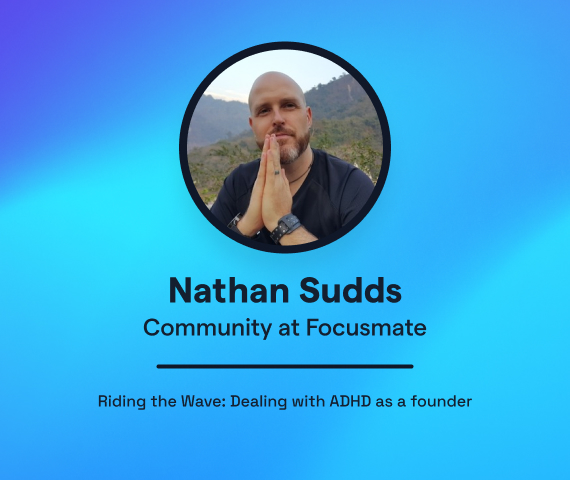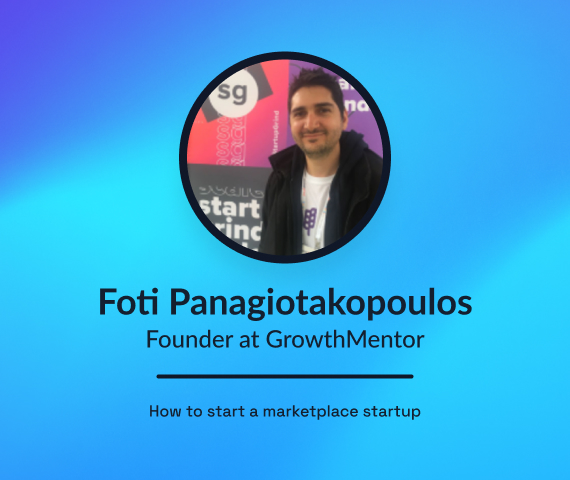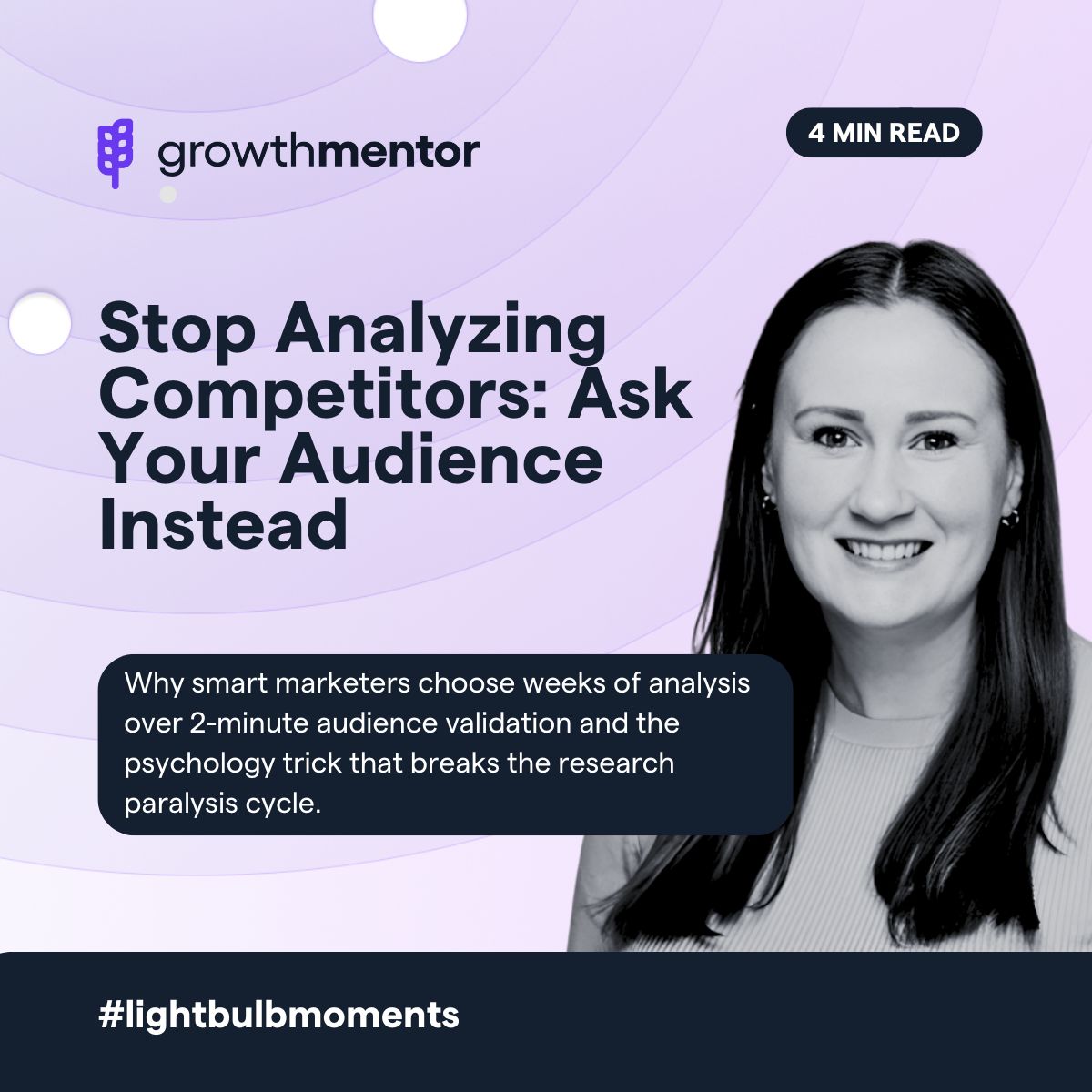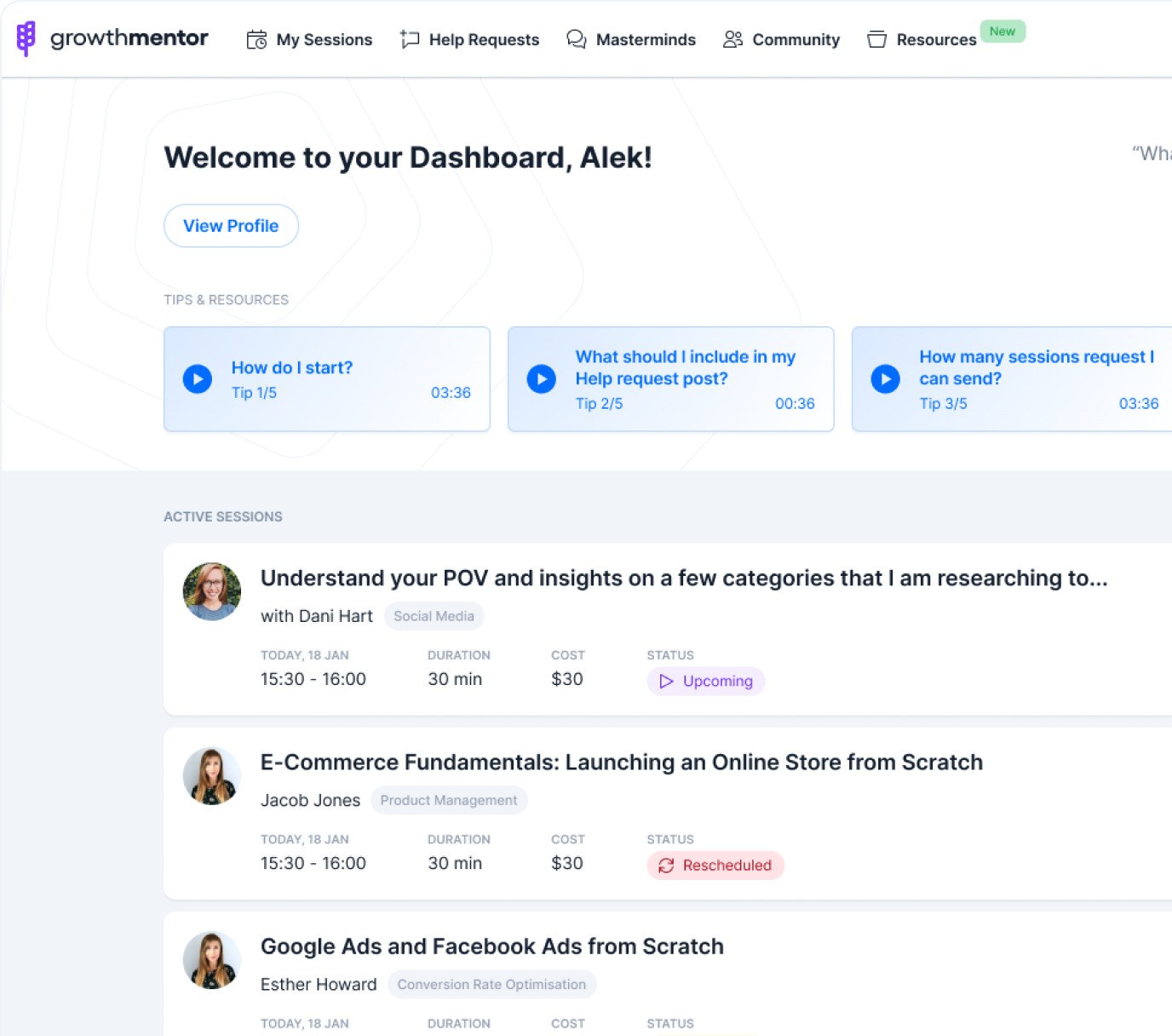The $10K Mistake Every Founder Makes (And the 45-Minute Framework That Prevents It)
$10,000 on ad tests without talking to one customer?
Sarah’s face went blank on my screen. We were 15 minutes into our GrowthMentor call, and I’d challenged the core assumption driving her entire marketing strategy.
Here was a founder with a stunning art platform showcasing Latin American artists. She’d moved, so she lost her in-person network, and decided Facebook ads were the answer. Ten different value propositions. Ten campaigns.
Scientific, right?
Wrong. Expensive guesswork disguised as systematic thinking.
I keep seeing this same pattern in my mentoring sessions. Founders are convinced that rapid testing equals smart business. But here’s what I’ve learned: those who spend time understanding their customers deeply before any testing scale much faster than those who test their way to insights.
Sarah was about to join the expensive education club. Instead, we built something better.
The Finance Brain Meets Marketing Reality
“I literally hate business,” Sarah told me.
She had every reason to feel lost. Her platform was gorgeous: 50% women artists, pieces that made you stop scrolling, a mission that mattered. But she’d left behind everything that worked: the Mexico City gallery events, the interior designer partnerships, the face-to-face connections that drove real sales.
Now she was staring at a laptop, armed with her finance background and a dangerous belief that marketing could be as logical as a P&L statement.
“There’s a million places to start,” she continued. “I want to test ten different angles and see which one works.”
Her plan was methodical. Spend $1,000 per angle testing messages like “reconnect with Latino culture” versus “support underrepresented artists,” versus eight other variations she’d brainstormed. Run the campaigns for two weeks each. Pick the winner.
I used to think this approach was smart, too. Then I watched founders blow $50,000 learning what they could have discovered in three weeks for free.
The Moment Everything Shifted
“I have good news and bad news,” I told Sarah.
She leaned forward. After 20 minutes of venting, she was ready for solutions.
“The good news is that since you don’t need to sell immediately, you’re in the perfect position to test anything.”
Her shoulders relaxed slightly.
“The bad news, what you want to do shouldn’t be done with ads.”
Silence. I could see her recalculating.
“But how much is ‘a lot of money’?” she asked. She was prepared to spend tens of thousands because it felt systematic.
“Look, Sarah,” I said. “You’re about to pay Facebook to guess what your customers are thinking. What if we asked them instead?”
That’s when I introduced what we’d call the Anti-Testing Method. Instead of testing 10 messages to find one that works, we’d discover the one message that resonates.
Completely backwards from startup orthodoxy. And it works.
Building the Framework in Real Time
Sarah was taking notes as I shared my screen. “OK, so instead of creating an audience…”
“Find where they exist,” I said. “Where do art buyers spend time?”
She paused, thinking. “Well, there are Facebook groups for interior designers. And…”
I watched her face change.
“Oh my god, there’s like 22 million people in the art subreddit.”
That moment, when she stopped thinking like a marketer trying to create an audience and started thinking like an anthropologist studying existing tribes, was breakthrough number one.
“I mean,” she paused, “that sounds so slow.”
“Slower than six months of failed ad campaigns?”
Sarah went quiet. We both knew the answer.
Over the next 30 minutes, we mapped out what I now call the Anti-Testing Method:
Step 1: Map the habitat. Sarah listed specific communities where her customers naturally gathered. Not demographic targeting, actual places. Art Reddit, interior design Facebook groups, and Latino culture forums.
Step 2: Ask about their struggle, not your solution. She’d been planning to ask, “Would you buy Latin American art?” Instead: “Walk me through the last time you chose art for your space.” People can’t lie about what they’ve already done.
“But customers lie about art,” Sarah protested. “It’s all about identity and status, but they won’t admit that.”
“Exactly. So we don’t ask about art directly. We ask about the feeling they’re trying to create in their space.”
Step 3: Become valuable before asking for anything. Sarah would join these communities and contribute first. Share insights about Latin American art movements. Answer questions about color theory. Build trust before extracting information.
She shifted in her chair. “But that sounds so slow.”
“Slower than six months of failed ad campaigns?”
Step 4: Pattern recognition over individual opinions. We created a simple grid: What they say they want | What they do | What triggers action | The language they use. Ten conversations would reveal patterns that 10,000 ad impressions couldn’t.
Step 5: Design from insight, not intuition. When Sarah finally did test ads, she’d test 2-3 messages based on customer language instead of 10 random guesses.
By the end of our call, Sarah had stopped asking permission to do research. She was asking permission to eventually do ads.
“So after I’ve done these conversation groups, am I allowed to test campaigns?”
The framework had flipped her entire mindset.
The Cooking Analogy That Changed Everything
“Think of it like cooking,” I told Sarah. “You can throw random ingredients together and taste-test your way to something edible. Or you can understand flavor profiles first, then combine ingredients you know will work.”
Most founders are taste-testing their way to customer understanding. They’re optimizing click-through rates without knowing what clicks mean.
Sarah was about to spend $10,000 learning whether “cultural connection” or “artist support” resonated more. But she didn’t know why either would matter to her audience in the first place.
The Anti-Testing Method flips this completely. Understand the flavor profiles (customer motivations) before combining ingredients (value propositions).
“I’ve never thought about it that way,” Sarah said. “I was so focused on being systematic that I forgot to be smart.”
The Immediate Transformation
By the end of our 45-minute call, Sarah’s energy had completely shifted. She went from “I literally hate business” to having a systematic three-week research plan that would cost nothing and deliver exactly what she needed: customer language for ad copy, validated value propositions, and predictable messaging.
Her voice had completely changed when she said, “I’m going to do my research, and then can I schedule another call with you to find out what to do once I’ve had my research?”
The framework had given her something she desperately needed, a systematic approach that honored both her finance background’s need for rigor and marketing’s inherent uncertainty.
Your Anti-Testing Toolkit
If you’re planning your own rapid-fire testing strategy, try this instead:
Week 1: Find your tribes. List three specific communities where your customers naturally gather. Spend two hours researching their rules, tone, and existing conversations.
Week 2: Listen before speaking. Join those communities. Contribute something valuable. Ask one question about their current struggles (not your future solution).
Week 3: Start conversations. Reach out to 5-8 people for 15-minute calls. Use this framework: “Walk me through the last time you [relevant behavior]. What was frustrating about that? How do you handle it now?”
Week 4: Find the patterns. Map their language, not your assumed positioning. Look for the gap between what they say they want and what they do.
Total investment: 12 hours over four weeks. Cost: $0. ROI: You’ll know exactly what to test and why before spending a dollar.
The Deeper Truth About Testing
Here’s what Silicon Valley gets wrong about “failing fast”: Rapid iteration only works when you’re iterating toward a known destination.
Sarah wasn’t failing fast. She was failing expensively in the dark.
The Anti-Testing Method isn’t about being thorough. It’s about being directional. When you understand customer motivation first, everything that follows becomes faster, cheaper, and more effective.
I’ve now used this framework with founders across different industries. The pattern is always consistent: Systematic customer understanding beats expensive ad optimization every time.
The best part? You’re not optimizing campaigns, you’re building systematic thinking that compounds across every future challenge.
The Framework Effect
Building this with Sarah taught me something beyond customer research. The most powerful frameworks don’t come from theory; they emerge when you’re solving real problems with real people about to make expensive mistakes.
Sarah started our call hating business because she was trying to guess her way to certainty. She ended it with a method for turning uncertainty into understanding.
That’s what happens in the best GrowthMentor sessions. We’re not downloading wisdom from mentor to founder. We’re building solutions together that neither of us could have created alone.
The Anti-Testing Method works because it replaces expensive guesswork with systematic customer understanding. And systematic thinking, once learned, transforms how founders approach every challenge that follows.
Now she builds systems instead of hoping for luck.




